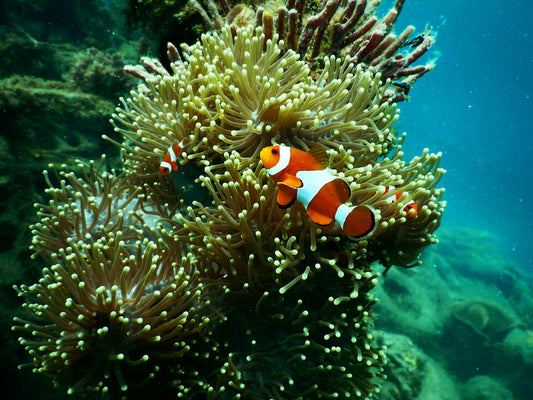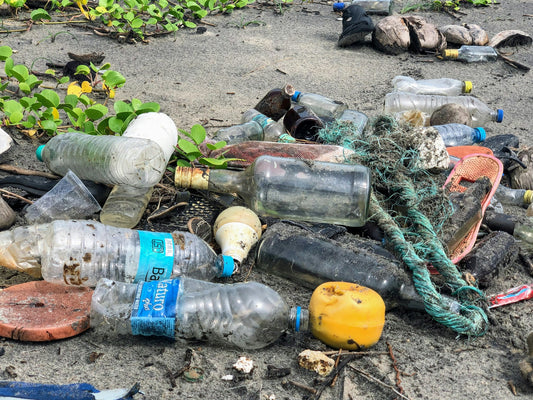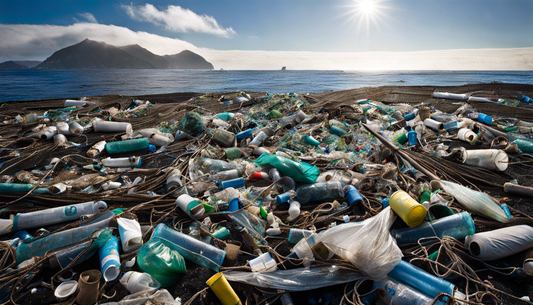Share
It has been four years since COVID-19 entered the world, and society is still struggling with the consequences of the COVID-19 pandemic.
While we have made significant strides in public health, a less visible but equally pressing crisis emerged: the increased production and use of plastics as a material and packaging solution.
The pandemic, which has increased the use and disposal of single-use plastics and personal protective equipment (PPE) as protective measures, has contributed to an already significant environmental problem.
Plastic masks, gloves, and other items have ended up in the seas, forests, and streets, causing pollution that poses a risk to the environment and people.
This blog post will discuss the long-lasting plastic pollution problem aggravated by COVID-19.
The Increase in Plastic Pollution During COVID-19

One of the most observed effects of COVID-19, which suddenly hit the world, was the use of single-use plastics.
Essentials like masks, gloves, and face shields became common or rather necessities in society as they contribute to the protection of health.
However, these items, which were mostly made from plastic, were one of the leading causes of waste.
According to a study, 129 billion face masks and 65 billion gloves were used in a month during the 2020 pandemic.
Though these items were essential in avoiding the transmission of the virus, their disposal was challenging for the environment.
Most of these products found their way to dump sites or, even worse, into the seas, thus negatively contributing to water pollution.
Medical Waste and Its Effect

The increased demand for PPE like face masks and single-use plastics for packaging and takeout has led to an estimated 8.4 million tonnes of plastic waste.
PPE was not the only sector that contributed to the rise of plastic waste and its consequences.
The specific sectors that were more active in the use of single-use medical devices and packaging included the healthcare sector.
Syringes and test kits, plastic bottles for hand sanitizers, and disinfectants became a norm in disposable plastics use.
A report from the United Nations Conference on Trade and Development (UNCTAD) revealed that medical waste rose greatly during the pandemic.
The amount of medical waste generated from COVID-19 since the outbreak was estimated to be 2.6 million tons per day globally at the height of the pandemic.
This increase in medical waste, which is sometimes poorly disposed of, has terrible implications for nature and society.
Disposal of medical plastics and other plastics in the environment pollutes soil and water resources, which is dangerous for animals and people.
Furthermore, the burning of medical waste, which is widely practiced, emits toxic chemicals into the atmosphere, thus affecting air quality, especially in the often poor communities close to incineration sites.
E-Commerce Rise and Packaging Pollution

The pandemic also impacted the increase in e-commerce's share, as restrictions such as lockdowns and social distancing promoted consumers to use online platforms for shopping.
This change, while optimal in terms of handling, resulted in increased amounts of packaging materials. Packing materials such as cardboard boxes, plastic wraps, bubble wraps, and the like were used to the highest degree.
According to the World Economic Forum, e-commerce sales rose 25-30% in 2020. While this shift in shopping behavior made it easier to access goods, it also led to increased packaging waste, many of which are non-recyclable or find their way into the wrong waste stream.
The Takeout Frenzy

In a similar vein, the food takeout market surged to an all time high. Takeout orders increased by 237% during the pandemic and with it surged the related plastic packaging.
As an additional factor contributing to pollutiion, many businesses banned the use of reusable items like coffee mugs, due to concerns about the virus.
At the same time, governments halted or slowed down their plastic reduction initiatives in favor of single use plastics to accomodate public concerns about spreading Covid 19 through reusable items.
The plastic industry of course loved the pandemic and positioned single use plastic as the healthiest solution, spending millions to turn the public fear to its advantage.
These combined factors led to a rise of 30% in residential waste and we are yet to recover fully from the increased single use plastic use.
Overall Environmental Impact of Single-Use Plastics

The effects of the tremendous increase in plastic use are felt in the environment. Plastics, especially single-use plastics, have a very slow degradation period.
The degradation is measured in hundreds of years, and they are very dangerous to wildlife.
Marine animals are particularly vulnerable to the dangers of plastic pollution, including swallowing plastic and being trapped by it.
A study by The Ocean Conservancy showed that about 8 million tons of plastic flow into the ocean every year, and this figure has likely grown because of the coronavirus outbreak.
The same study calculated that additional plastic waste from COVID-19 could reach 1 million tons per month.
Measures Taken to Fight the Crisis
As the problem of plastic pollution has become apparent, many organizations and governments have taken action to prevent it and some countries are moving closer and closer to plastic-free living.
For instance, the United Nations Environment Programme (UNEP) has been assisting countries in enhancing their waste management and reducing plastic use.
Some of the measures that they have embarked on include encouraging the use of biodegradable products and improving recycling practices. Moreover, some countries have adopted measures to reduce plastic use.
For instance, the European Union’s Single-Use Plastics Directive entered into force in July 2021 and prohibits some single-use plastics and seeks to decrease marine debris from the ten most frequently identified items found on European beaches.
Innovations in Plastic Alternatives
Due to increased awareness of the problem of plastic pollution, the number of inventions offering solutions has also increased, and there are more and more alternatives to choose from.
Biodegradable and compostable plastics are derived from renewable sources like cornstarch and sugarcane.
These materials degrade more rapidly and sustainably in the environment than normal plastics.
For example, Novamont is working on bioplastics that blend with industrial composting sites.
Sticking to Plastic Alternatives is The Only Approach We Need to Follow
The outbreak of COVID-19 has undoubtedly contributed to the increased levels of plastic pollution in the world.
Single-use plastics, medical waste, and packaging materials are increasing at a very alarming rate, posing a serious problem for our environment.
However, this situation has also led to innovations and further public awareness of this matter.
In the future, it is important to maintain the focus on sustainable development, enhance the approach to waste disposal and encourage further development of plastic substitutes.
Together, we can fight against plastic pollution and create a better world for the generations to come.
Do you still see the impacts of Covid in your life? Leave a comment below and engage in the discussion!
We hope you enjoyed this article. If you want to read more like this, make sure to check out our Blog and follow us on Instagram. If you are interested in truly sustainable products, check out our Shop.








